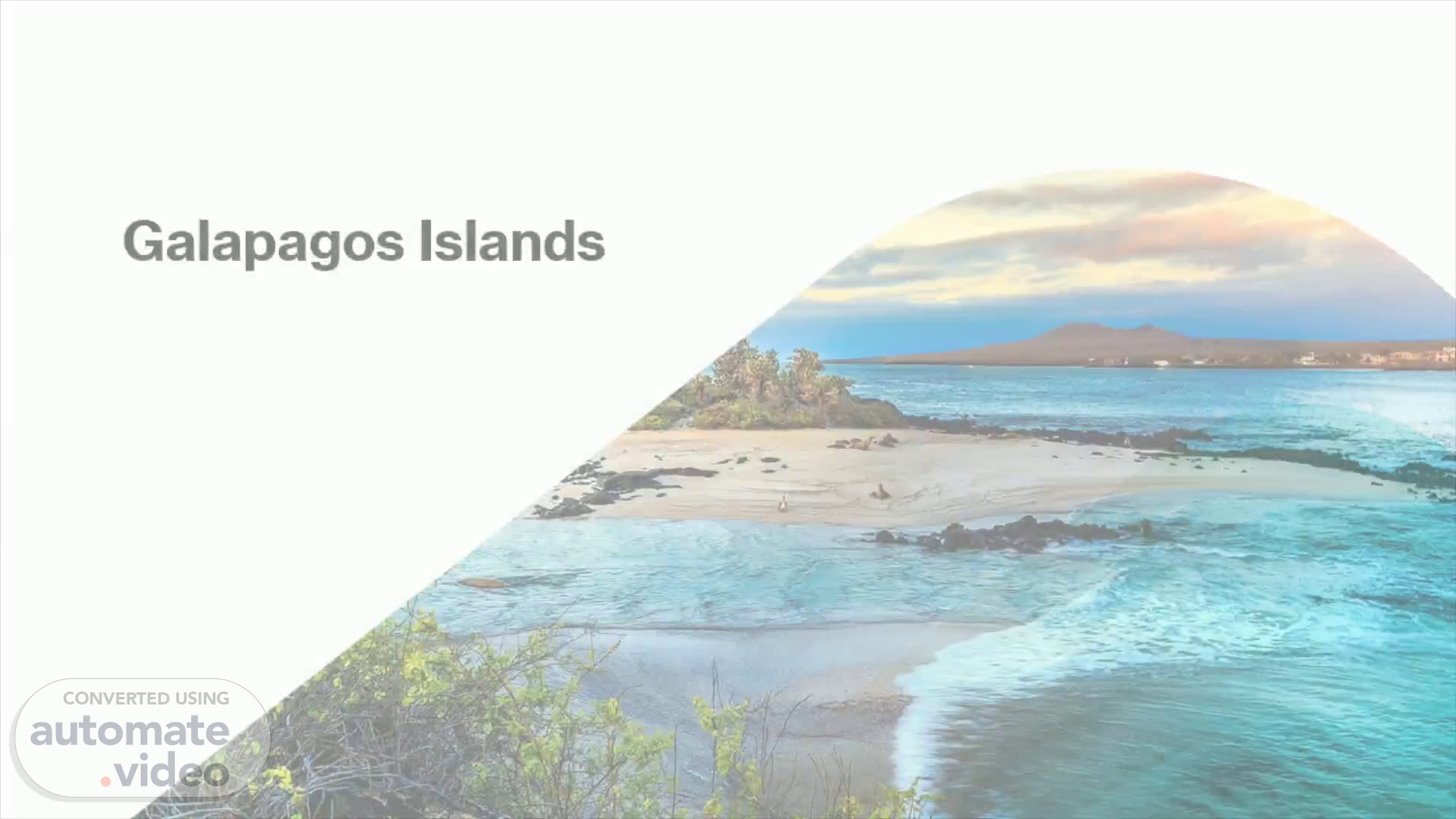
PowerPoint Presentation
Scene 1 (0s)
Galapagos Islands. Galapagos Islands WorldAtlas.
Scene 2 (6s)
The ecosystem. The Galapagos islands consist of 13 major islands and many smaller islands and islets Found in ecuador Species that live in the Galapagos island include:.
Scene 3 (23s)
Human activities. Forests of Scalesia trees and shrubs have been almost eradicated to make way for agricultural land which has led to the habitat getting negatively affected in terms of its biodiversity There has been overfishing resulting to exotic species being depleted. For example sea cucumbers Pollution has led to animals being killed when they come entangled in plastic bags or consume trash There has also been a lot of demand for shark fin which led to 150,000 sharks dying each year Goats feed on the rock- pulslane which is a species unique to the Galapagos island, they also feed tge guabt tortoises food supply and disrpt their nesting sites The invasive species called hill raspberry is spreading rapidly throughout the humid zone and is affecting the daisy trees by competing with them for water, nutrients, space and sunlight Hill raspberry reproduces rapidly and renders soil useless and is expensive to control.
Scene 4 (1m 0s)
Human impact. Accidentally humans introduced an invasive species of fly in the Galapagos islands which lay their eggs in mangrove finch nests and when the eggs hatch the larvae feed on the mangrove finches which leave them too weak to grow and may even kill them Even the cat was introduced in the islands resulting to a decrease in the native species of lava lizard and young iguanas.
Scene 5 (1m 23s)
How the effect of humans is controlled. There was an extermination program in the 1970s for goats resulting to galapos tortoise being able to survive as the number of goats in the island fell Every time a boat arrives in the island it is searched for foreign species An organisation called the IGTO has put in place scholarships for research in the Galapagos, scouts program to improve environmental education and a recycling center . The WWF, together with key partners has helped create more efficient ways to monitor vessels in the marine reserve, using the latest technology such as satelites,radars and radios. These were used to detect illegal fishing activities and minimise the risks of oil spillage.